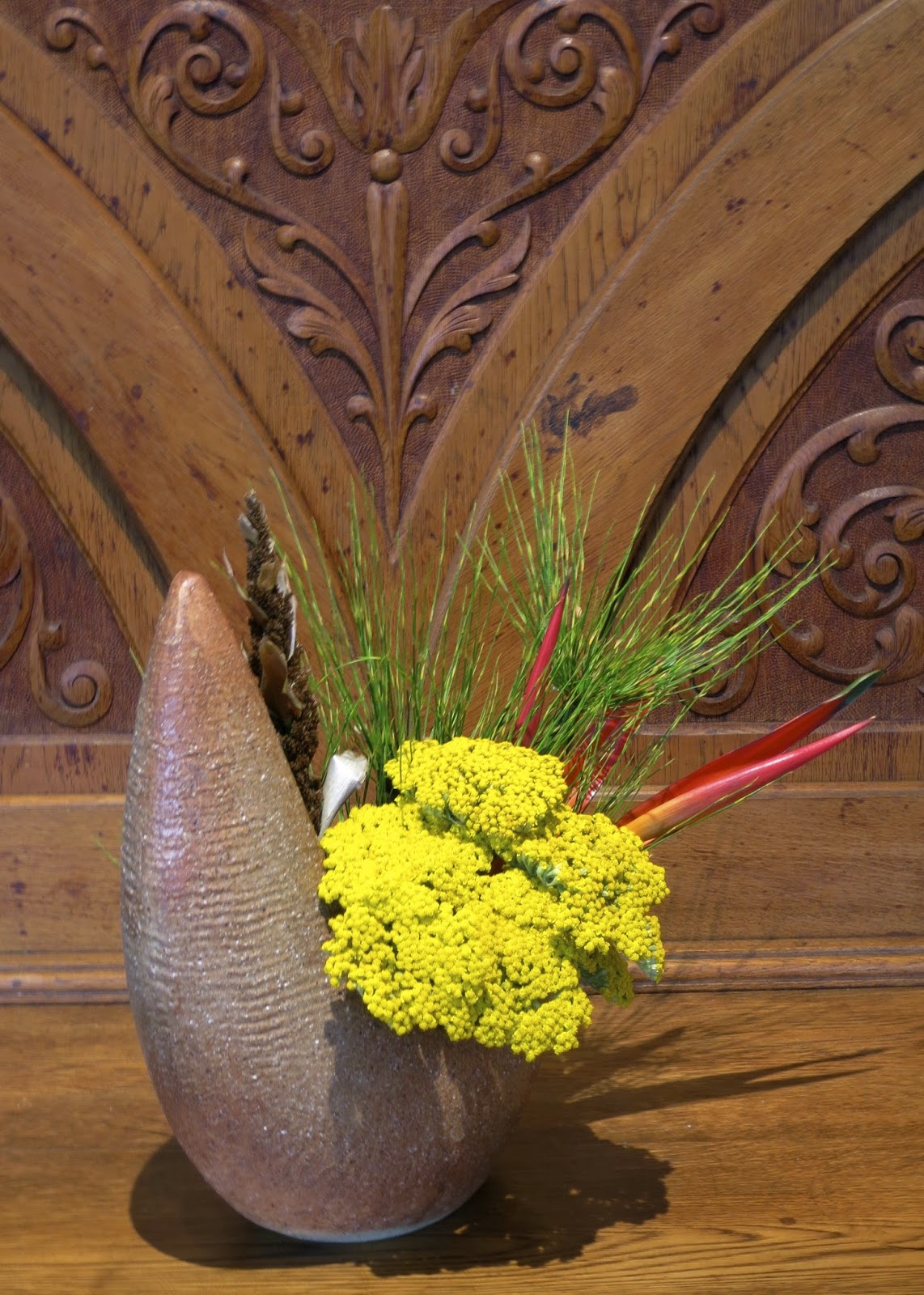We have almost come to the end of another year that has been wonderfully full with ikebana and other activities. The major highlight for me on the ikebana front, which took up a lot of energy at the time, was the exhibition to celebrate the 50th anniversary of the Victorian Branch of the Sogetsu School, 'Autumn in Melbourne' *.
On Thursday this week my students and I gathered for an end of year celebration. We met at my house and each person brought a gift of food to share.
Then our ikebana activities began. The advanced students drew a number from a 'hat' which corresponded with a specific location in the house. Their task was to make an ikebana arrangement with materials they had brought and make it complement the space they were allocated. Additionally they had to work in an unfamiliar vessel that they chose from my collection of vases.
This first work is by Alana who used unusual flowers (from an unknown South African tree, see photo below) with two types of fern the massed one on the right being a form of asparagus fern.
I photographed the tree in the Royal Botanic Gardens Melbourne this morning but couldn't find a marker with its name.
Maureen used some fine white flowers, red berries and strappy leaves in a circular vase placed on its side.
I have re-photographed the arrangement as it was difficult to see well against the vertical blinds.
The challenge for Christine was the confined space of this corner at the end of a long corridor. She has used a palm spathe, white painted branches and white agapanthus.
The challenge for Ellie's arrangement was the very busy background of the carved sideboard. This situation diminishes the impact of lines in an arrangement.
She massed small yellow flowers, red heliconia and horse tail in a crescent shaped ceramic vase.
I am afraid I did not even try to photograph Helens work in situ. Her location was a low glass topped table standing on a dark red patterned rug.
She used succulent fruits and two dried leaves from a 'fiddleleaf fig' * (ficus lyrata). This photo shows the work as an arrangement 'To be viewed from above', one of the set exercises from the Sogetsu curriculum.
The last arrangement is by Vivien. She has used a form of 'Sea Holly' * (Eryngium Maritimum), and for contrast a large pink hydrangea and two leaves of acanthus from our garden.
As usual we enjoyed the fellowship of our class and the joy of making ikebana with the added challenge of working in an unfamiliar location and unfamiliar vase.
Wherever you are reading this, I hope you have a safe and happy Christmas.
Greetings from Christopher
21st December 2014
* Click on the blue text for further information.





























